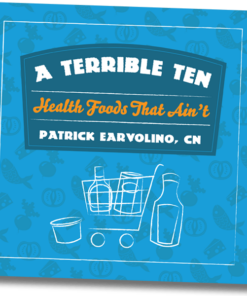Burn more calories than you eat, and you’ll lose fat. This belief, known as the “calories-in, calories-out” theory, is an unquestioned principle of nutrition. We all buy it. And it makes sense—if we assume all calories behave the same in the body. Or, as the dietitians like to put it, “a calorie is a calorie,” whether it comes from fat or carbohydrate or whatever. The only problem with this seemingly sensible idea is, well, it’s not true.
Back in the early 1960s, Dr. George Campbell worked at a hospital in Natal, South Africa, where he studied a local population of Indian immigrants. Although the Natal Indians were utterly impoverished, living on as little as 1600 calories a day and toiling for hours on end in the local sugar plantations, many of them were “enormously fat,” as Campbell put it. How could this be, when the calories-in, calories-out theory says the Natal Indians should have been deathly thin?
Whole Lotta Carbing Goin’ On
Since the caloric theory couldn’t account for what was going on, Campbell looked for clues in the specific foods the Indians were eating. Their diet was very low in fat, so that didn’t appear to be the issue. They did, on the other hand, eat approximately 80 pounds of sugar each year—about 25 percent of a 1600-calorie diet—as well as lots of refined complex carbohydrates such as white flour. One can imagine Campbell wondering if there was something about sugar and other refined carbohydrates that was messing up the metabolism of his patients and making them store fat they couldn’t burn off.
If one is looking for a connection between fat storage and carbohydrate consumption, the hormone insulin is a great place to start. Insulin not only dictates whether fat is to be stored by the body or used as fuel, its production depends how much glucose, the end product of carbohydrate digestion, is in the blood. So we have a connection: Carbohydrates — > Insulin — > Fat storage.
And You Thought Fat Just Sat There
While it’s often said in nutrition that carbohydrates are the “preferred fuel source of the body,” this is incorrect. Metabolism researchers have known since the 1960s that the body gets the majority of its fuel from fat tissue, which continually releases fatty acids that circulate through the blood, ready to be utilized as energy or returned back to the fat cells if not needed. Fat tissue is like “money in the bank” when it comes to fuel production in the body.
If fat cells represent our savings account, then glucose is our ready cash. As soon as it hits the blood, it causes the pancreas to secrete insulin, which in turn moves some of the glucose into the cells for use as fuel. Much of the rest of the glucose is converted to fat and sent to the fat cells for storage, reflecting the importance the body places on having money in the bank.
Glucose and fatty acids work in tandem to keep the supply of energy to the body steady. When glucose in the blood is high, the body’s cells use it as their main fuel and draw little from the fat supplies. When blood glucose is low (like when you’re asleep or haven’t eaten in a while), the cells use fatty acids as their main fuel. In other words, when there’s cash (glucose) in the wallet, we use that to pay our cells. When cash is tight, we draw from our savings account (fat). Yet under certain conditions, as we’ll see, we can’t access the fat in our savings account regardless of how much glucose is in the blood. It’s as if someone took away our debit card and put us on a cash-only plan.
The Trouble with Insulin
The chief regulator of the glucose-fatty acid operation is insulin. This hormone is most famously known for its function of moving glucose from the blood into the body’s cells. But here’s the key to this whole discussion: Insulin also prevents fatty acids from leaving the fat cells. So if there is too much insulin in the blood for too long a time—a condition known as hyperinsulinemia—you can’t access your fat savings. This is what we meant about having your debit card taken away. All you can use to pay your cells when insulin is high is glucose.
So how does insulin become abnormally high in the blood? You probably guessed: through the consumption of refined carbohydrates. Something about the way these foods are digested promotes hyperinsulinemia. The persistently high amount of insulin in the blood denies us access to our fat supplies and puts us on a glucose-only metabolism. As long as we continue to get most of our calories from refined carbohydrates, insulin remains high and fat storage continues. “Carbohydrate is driving insulin is driving fat,” in the words of Harvard endocrinologist George Cahill.
Calories In…But Not Out
This carbohydrate-driven dysfunction of insulin behavior explains why the Natal Indians were overweight in spite of eating so few calories, and why the calories-in, calories-out theory doesn’t hold for the human body. By making sugar and other refined carbohydrates our main fuel source, we shut off access to our fat stores. Calories go in, but they don’t come out. This also explains why a person on a low-calorie, high-carbohydrate diet is often fatigued. The person takes in less fuel than normal yet is unable to access energy from the fat cells to maintain the normal operations of the body’s cells. So the cells respond by slowing down their metabolism, and instead of burning fat, the dieter just gets tired.
Most of all, hyperinsulinemic weight gain forces us to reconsider the nature of obesity. In most cases it isn’t a matter of gluttony—the inability to keep from the dinner table—but rather a glitch in a basic hormonal system of the human body by which calories are shoved into fat cells and made unavailable. That this should occur isn’t particularly surprising, since refined carbohydrates don’t remotely resemble the foods our fuel production system evolved on. The surprise is that we still continue to believe “a calorie is a calorie” and “calories in, calories out” in light of all this.
For an in-depth explanation of the carbohydrate hypothesis, backed by 65 pages of scientific references, see Gary Taubes’ landmark book debunking the modern myths of nutrition, Good Calories, Bad Calories.
Photo from iStock/Yulia_Davidovich





Great article. I was always thin and active until I started eating out in restaurants in the early 90s. I packed on 50 lbs in no time but attributed it to my divorce and subsequent bad relationships! haha! Several years ago I cut out refined carbs and lost 25 lbs in 3 months! But life got stressful again and I started eating out a lot. So now I’m in my 50s and sixty lbs overweight. I’m sick of it. I’m sick of diets being thrown at me. I’m sick of the desperate feelings of wanting to be healthier and more active. So it’s good to see the science behind the refined carb process. Deep down I know it’s true. It certainly follows the patterns of weight gain in my life. Thank you for writing this. I will check out some more of your stuff. And I am certainly changing my habits!!!
Linda H.
Hi, Linda! Thank you for taking the time to share your story and check us out. If you have any questions, please email us at info@seleneriverpress.com.
Linda, if you want any help after exploring SRP, just holler! Check out the Practitioner’s Corner and there’s plenty of free research and writing in the Historical Archives. Call anytime!